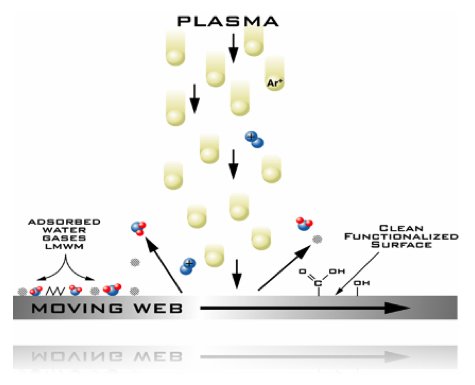>>Click here to go back to previous page<<
 What is Plasma and How Does Plasma Treatment Work?
What is Plasma and How Does Plasma Treatment Work?
Plasma is a partially ionized gas comprised of ions, radicals, metastables, and neutral molecules. Plasma cleaning works by exposing the target surface to a controlled, low temperature, plasma that is produced by introducing reactive gas molecules to an electric field. Excitation of the reactive gas molecules results in a partially ionized medium comprising a variety of energetic particles (plasma). These energetic particles then react with the substrate surface; specifically, the plasma, a) removes organic contaminants and low molecular weight material (LMWM) from the surface, and b) leaves behind, or “grafts,” functional groups on the material surface with which to bond. This has the effect of increasing metal nucleation sites on the film surface, which further results in enhanced barrier properties. Key benefits of plasma treatment include:
- Reduction of low molecular weight contaminants from substrate surface ("cleaning")
- Elimination of adsorbed moisture
- Addition of “functional” or polar molecular groups
- Discharging of polymer substrates
- Particle reduction on the film surface prior to metallization
